It takes ten years for an emission of carbon dioxide (CO2) to have its maximum warming effects on the Earth, a new study shows. It was previously thought that the warming effects from a CO2 emission would not be felt for several decades. The authors conclude that benefit from avoided CO2 emissions, and thus avoided droughts, […]
Tag: ecology
Atmospheric pollutant hides in the dirt at night
A new explanation for rising and falling concentrations of the atmospheric pollutant nitrous acid (HNO2 ) could help predict ‘smog days’. Nitrous acid is quickly destroyed by sunlight in the atmosphere, but nevertheless it can build up to detectable levels during the day, pointing to an unknown source. The new study explains how HNO2 created […]
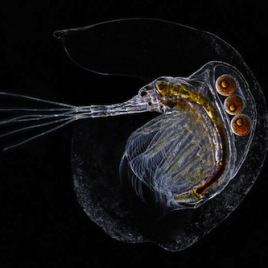
The ‘jellification’ of Canada’s freshwater lakes
A strange jelly-covered organism is taking over various lakes in Canada, and the cause is a kind of ‘aquatic osteoporosis’ due to low calcium levels, according to a new study. Researchers studied two kinds of tiny crustaceans about 1 mm or less in size: Daphnia – AKA water fleas – have a hard shell, while Holopedium […]
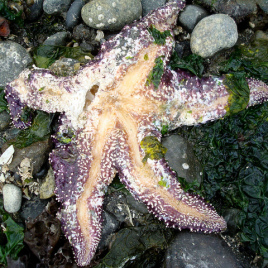
Virus could be the cause of sea star die-offs
Researchers announced they have found a virus that may be the cause of a mysterious disease that infects dozens of sea star species along the Pacific coast between Alaska and Mexico, including off the coast of Vancouver since 2013. A study shows that sea star wasting disease (SSWD) could be caused by a very small virus (∼25 nm) […]
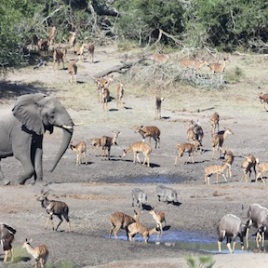
International collaboration needed to protect endangered species
A new study uses models to show that international collaboration is critically needed to prevent catastrophic habitat loss for some of the world’s most threatened species. The authors analyzed the distribution of almost 25,000 threatened species across the world and found that expanding the global protected area network to cover 17% of the world’s land […]
Does ecology influence religion?
A new study suggests that environmental factors, alongside social and cultural factors, may play a strong role in determining the type of religion associated with a particular society. Researchers analysed 583 societies around the world to determine the role played by linguistic, historical, cultural and environmental factors in the dominant religion. In particular, they found […]
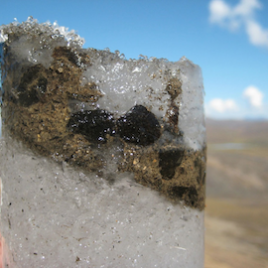
Ancient Arctic viruses still infect plants
The genome of a virus found in 700-year-old frozen caribous feces was shown to infect plants in the laboratory, a new study reveals. Researchers analyzed the viral genetic material contained in a core drilled through layers of accumulated caribou feces up to 4,000 years old in an ice patch in Canada’s Selwyn Mountain in the […]
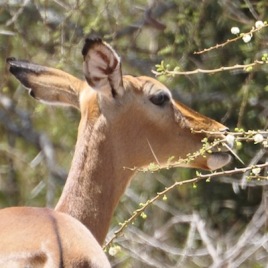
How carnivores impact the African landscape
A new study shows the presence – or absence – of carnivores can have a big impact on how many and what kind of trees grow in a landscape. Working in central Kenya, researchers looked at different tree species – with or without protective thorns – in areas where herbivores get eaten by their predators, […]
Climate change will shift fish toward poles
A new analysis using computer models indicates that many commercially important species of fish are moving toward the poles and that some could disappear from the tropics altogether by 2050. The analysis used multiple models and covered 802 species to show that fish ranges are moving at a rate between 15 and 26 km per year. […]

Vibration is key to wind pollination
If you’re a plant, and the animals or insects that pollinate you are disappearing or gone, your next best option might be wind pollination, and a new study sheds light on what adaptations are needed to make this transition. Researchers looked at flowers of English plantain, which like most wind-pollinated plants evolved from an animal-pollinated […]
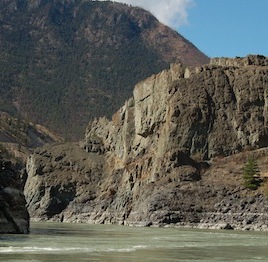
‘Upside-down’ water flows keep the Fraser Canyon steep
A new study shows water in certain stretches of the 542-kilometre Fraser Canyon in British Columbia is flowing ‘upside-down’, a discovery that helps explain why the canyon walls remain so steep. Researchers discovered that high velocity water flows down into deep pools and then upwells along the canyon walls, such that the water along the bottom flowing […]
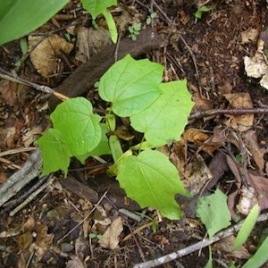
How will climate change affect sugar maples?
A changing climate means trees will grow in new places, but an experiment with sugar maples shows that other factors – such as soil conditions or seed predation – need to be taken into account as well. Researchers grew maple seedlings on the slopes of a Quebec mountain where climate conditions are more favourable for […]
Carbon quotas are nearly used up
Two upcoming papers discuss the concept of a carbon quota, that is, a limited amount of carbon that can be released to the atmosphere in order to remain below a certain global warming target. The first paper, published in Nature Geoscience, indicates that we have already used up two thirds of the carbon quota needed […]
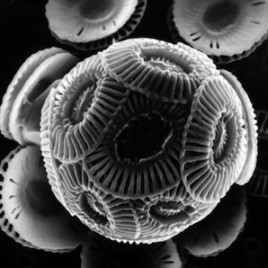
Phytoplankton produces its own vitamins
A type of phytoplankton found all over the world appears to be able to survive without external supplies of vitamin B1, leading to a re-thinking of how the vitamin controls growth and carbon uptake in the global oceans. The availability of nutrients and vitamins in the ocean is a key limiting factor controlling blooms of phytoplankton, […]
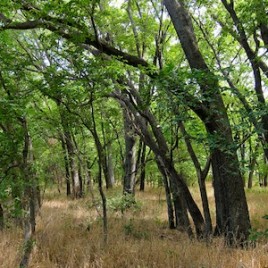
Are trees crowding out cows?
Livestock like beef cows can suffer when grasslands, shrublands and savannas shift to a more tree-covered landscape and new research has put a number on this effect. Using computer models the authors show that for every 1 per cent increase in tree cover, the number of reproductive cows per square kilometre drops by about 2 […]
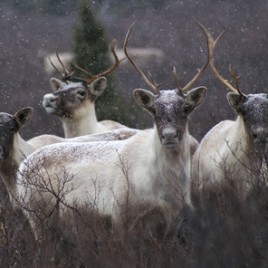
New tools to explain genetic diversity in caribou
Maintaining healthy genetic diversity in caribou means ensuring that populations don’t become fragmented, but a new study underlines just how tricky this can be. Currently, caribou preserves are constructed without taking into account how the habitat needs of caribou change throughout the year; for example, land that is prime pasture in summer may be snow-covered […]
